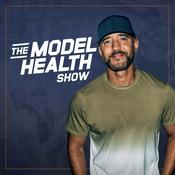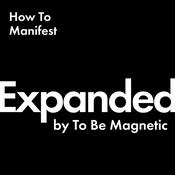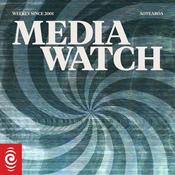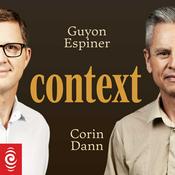29 episodes

Hormone Diets: Clickbait or the key to weightloss?
26/2/2024 | 13 mins.
Forget all the others, hormone diets claim to be the secret to fast, easy weight loss. But are they really just preying on our insecurities? Healthy or Hoax host Stacey Morrison finds out.Can eating for your hormones help you lose weight?When it comes to weight loss, everyone is looking for the silver bullet. Add in ageing and all of a sudden the tricks you used to lose a couple of kilos when you were 20 years old don't work anymore.Could hormones be the key? Stacey Morrison finds out if hormone diets are healthy or just a hoax.Kadambari Raghukumar, host of the RNZ podcast Here/Now, was sent a link to a diet marketed as a 'metabolic renewable programme' and thought she would give it a go."It sounds very attractive. I mean, how do you not click on that, right, 'metabolic renewal'? Renew is the most attractive word you can put out there," she says.Raghukumar was asked a series of questions about her current weight, daily stress levels and how much exercise she does, with the end promise that she would find out how her hormones were working and then be given a diet that would kickstart her metabolism and help her lose weight.Raghukumar was disappointed in the results, which labelled her a 'Hormone Type 1'."It said 'Hormone Type 1' is mixed signal hormones. But hang on a second, isn't everybody mixed signals at some point in their life? Your body's always throwing different things out to you. That just sounds a little too vague. I couldn't make much sense of it."Raghukumar was told that this hormone type meant she could find it easy to lose weight and gain more energy. "But it also told me certain things that I, to an extent, already had known," she says."It gave me the rundown as to how you can reduce cortisol levels, which is invariably related to stress and I found that quite, just really generic. It doesn't really take a test to know that about anybody's life really, the more stressed you are, the more likely you are to gain weight."In the end, Raghukumar decided the diet wasn't worth it."I stopped before I could even get to the stage where I was going to subscribe to the programme."I just thought, 'do I have to sit here and watch an infomercial of this'? A man with a very glamorous name for a doctor talking to me in a very, very heavy American accent telling me what I can do to change my life? I couldn't really follow through with it."Could a hormone diet work?…Go to this episode on rnz.co.nz for more details

Functional Fungi: Mushroom marvel or Money pit?
19/2/2024 | 12 mins.
Love them or hate them, could mushrooms be the key to good health. Stacey Morrison focuses on functional fungi in the latest episode of Healthy or Hoax.Functional fungi are the hot new thing in health and wellness circles. Many would say all fungi are functional, but in this case it refers to mushroom powders and supplements which some believe have a huge variety of benefits. In this episode of Healthy or Hoax, host Stacey Morrison investigates functional fungi.There are plenty of New Zealand-based companies getting in on the mushroom supplements game, offering products that claim to boost gut health and immune support, increase oxygen uptake and ease fatigue, and improve heart health and sleeplessness.To find out more about fungi in general, Healthy or Hoax producer Liz Garton attended the annual fungal foray to talk to some mushroom enthusiasts, including Bevan Weir, research leader in mycology and bacteriology at Maanaki Whenua / Landcare Research.Weir says there is no strong evidence for many of the claims around fungi supplements having amazing healing powers."But there's a lot of active research going on, so yeah, there's there's always the possibility," he says.Weir says even if you take out the unproven health benefits, mushrooms are good for you, especially if you're using them in place of meat products with high levels of cholesterol and animal fats."We really don't know if you're thinking about any sort of like specific activity, but I think mushrooms in general are just a really great thing."If you can build it into meals and eat it and if it has some great effects as well, that's just a bonus."Alexander James Bradshaw from the Natural History Museum of Utah, who was in Aotearoa doing postdoctoral research, also attended the foray.He says it's likely there are many medicinal compounds in a wide variety of different mushrooms. Lion's Mane mushrooms, for example contain chemical compounds called hericenones and erinacines."They are starting to come out in the literature as possibly being neurotropic, so actually having the ability to make healthier brain connections," he says.But he warns that the research is in its infancy. And although many companies are already capitalising on the early findings, their claims should always be taken with a grain of salt."My biggest problem with many of is that they are often sold as panacea."Dr Michael Howard practices emergency medicine in Northland and has a PhD in microbiology and immunology. He hopes that the folklore around mushrooms will soon be proven by science…Go to this episode on rnz.co.nz for more details

Light therapy: Does red mean GO for getting rid of wrinkles?
12/2/2024 | 12 mins.
Stacey Morrison puts the spotlight on light therapy for anti-aging and acne in the episode of Healthy or Hoax.Healthy or Hoax host Stacey Morrison puts the spotlight on the latest in anti-aging skin treatments - light therapy.The history of light therapyDenise Ryan, vice president of global brand management for BioPhotas, (the company that manufactures the Celluma light therapy device), says light therapy was "sort of a serendipitous or a accidental discovery".In the 1960s some scientists who were researching whether laser therapy could reduce cancer tumours in rats found an odd side effect. While it turned out the light was at too low a level to impact the cancer, the rats wounds healed faster than expected and their hair grew faster and shinier."They knew they had discovered something and that something turned out to be low level light therapy or as we call it today, photobiomodulation," says Ryan.Then in the 1980s NASA began experimenting with low light for stimulating cell activity in plants and when they found it helped the plants to grow, they thought they would see what it did to human tissue.What is it actually doing to us?What low-level light therapy does to human cells is is similar to photosynthesis, Ryan says."When you send specific wavelengths of light into human tissues at very specific, low doses, within a certain range, human cells are capable of absorbing the light and converting that energy into cellular energy."That energy helps compromised or damaged cells get back on track and when used in, for example, fibroblast cells which generate the collagen and elastin, it helps keep our skin looking plump, she says."The NASA research showed us that it helps tissue to heal and repair at about 3 to 6 times the normal rate."And that's for the average person. And the healthier you are to begin with, the faster you might see results. But honestly, everybody gets to see your results provided the device they're using has been designed to follow the known scientific parameters for effectiveness."What are the parameters?Light wavelengths are actually measured in nanometers and Ryan says it is a very narrow segment of the electromagnetic spectrum that has the ability, when delivered in the correct doses, to be absorbed by human tissue and used to generate this extra energy.That range is roughly between 400 and 1000 nanometers and includes the colours blue, red and near-infrared.And to be therapeutic, that low-level light needs to be emitted at a rate of between two to 10 joules per centimetre squared.What are the risks of light therapy?…Go to this episode on rnz.co.nz for more details

Sleep syncing & mouth taping: The solution to sleeplessness and snoring?
06/2/2024 | 12 mins.
Dreaming of taping a snorer's mouth shut? Struggling to snooze? Stacey Morrison finds out if mouth taping, sleep syncing and the latest apps and technology could be the secret to getting a good night's rest.We spend a third of our lives sleeping and yet so many of us have trouble with it.So when we hear about new theories on how we might improve our sleep, it's not surprising that people want to try them out. This week on Healthy or Hoax, Stacey Morrison finds out whether sleep syncing using the latest apps and technology could improve our wellbeing and whether taping your mouth shut will help with the biggest barrier to a good night's sleep - snoring.What is sleep syncing?Professor Leigh Signal from the Sleep/Wake Research Centre at Massey University is an expert in fatigue management and sleep health. She says sleep syncing is really just about understanding that you've got a circadian biological clock and then aligning your sleep pattern or your sleep schedule with that clock.While the term "sleep syncing" may be new to some, sleep scientists have been trying to spread this kind of message for years."The crux of it is spot-on scientifically," Signal says."There are some slightly off base messages happening as well, though, so I think it's good to explore it a little bit more."Signal says the human body's amazing circadian biological clock helps to keep us in step with the day/night cycle. While we are all hardwired to sleep at night and stay awake during the day, that doesn't mean all our clocks are ticking away in time."I am slightly more an evening type person, so I like to go to bed a little later," Signal says."Most of us are, somewhere kind of in the middle, although there are a few people out there that are extreme morning or evening types."How do you sync your sleep?Essentially, it's about having a regular bedtime and a regular waking time."In an ideal world, perhaps, so we should be going to bed when we feel sleepy, and we should be waking up, when we naturally wake," Signal says."But many of us also have jobs that don't allow us to do that. And then we have teens, for example, who just biologically, their circadian system has shifted during puberty so that they can't go to sleep until later, and then they want to wake up later. But that's not how the school system currently works."Generally speaking, we tend to sync our sleep with our work/life schedules rather than our circadian rhythms.Can technology help?…Go to this episode on rnz.co.nz for more details

Retro Walking: Fitness Find or Fad?
29/1/2024 | 12 mins.
Could walking backwards be the key to taking your fitness forwards? In this episode of Healthy or Hoax, Stacey Morrison laces up her sneakers to find out.One of the slightly bizarre new fitness trends doing the rounds is retro walking. Basically, walking backwards.Stacey Morrison, host of RNZ's Healthy or Hoax podcast, laced up her trainers to find out if the rewards of reverse exercise outweigh the risks.Why walk backwards?YouTube experts and fitness gurus suggest walking backwards is a really good way to get fitter faster, to strengthen muscles and even improve brain health. But what does the science tell us?Professor Winston Byblow, director of the movement neuroscience laboratory, says health scientists are often are looking for ways to help people move better and recover after certain types of injuries or conditions."Retro walking is interesting because it is really combining two elements. One is walking, which has well-known benefits. And the other one is that it prevents an additional challenge by demanding more attention. I mean, you can imagine that, if you try walking backwards, the first problem you run into is you can't see where you're going."Is walking backwards different to walking forwards?Pablo Ortega Auriol, a research fellow at the Auckland Bioengineering Institute, is an expert in the biomechanics of walking. He says certain aspects of backwards walking, such as how the segments of the body move, look really similar but the actual difference is in the muscle activity."Since we have a cognitive load in our muscles activate more with a little bit of a different timing than when we work forward."Simply put, because you have to think about what you are doing when you walk backwards, your muscles activate more.While he hasn't seen any long-term studies on retro walking, he says that appears to be what happens in the beginning and it seems that this actually helps to improve balance in certain population.Retro walking in actionIn order to illustrate muscle activation during reverse walking, Stacey hopped on the state-of-the-art treadmill in the movement neuroscience laboratory.Ortega Auriol points out how when you are walking forwards, the calf muscles, or gastrocnemius, propels you forwards and you do not have to think about it."Most of the motor pathways involving walking are present in the spinal cord, not actually in the brain," he says…Go to this episode on rnz.co.nz for more details
More Health & Wellness podcasts
Trending Health & Wellness podcasts
About Healthy or Hoax
Listen to Healthy or Hoax, Get Sleepy: Sleep meditation and stories and many other podcasts from around the world with the radio.net app
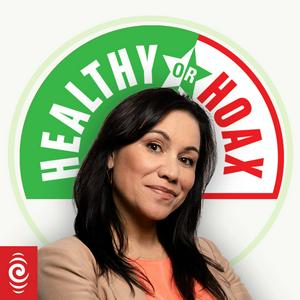
Get the free radio.net app
- Stations and podcasts to bookmark
- Stream via Wi-Fi or Bluetooth
- Supports Carplay & Android Auto
- Many other app features
Get the free radio.net app
- Stations and podcasts to bookmark
- Stream via Wi-Fi or Bluetooth
- Supports Carplay & Android Auto
- Many other app features


Healthy or Hoax
download the app,
start listening.













